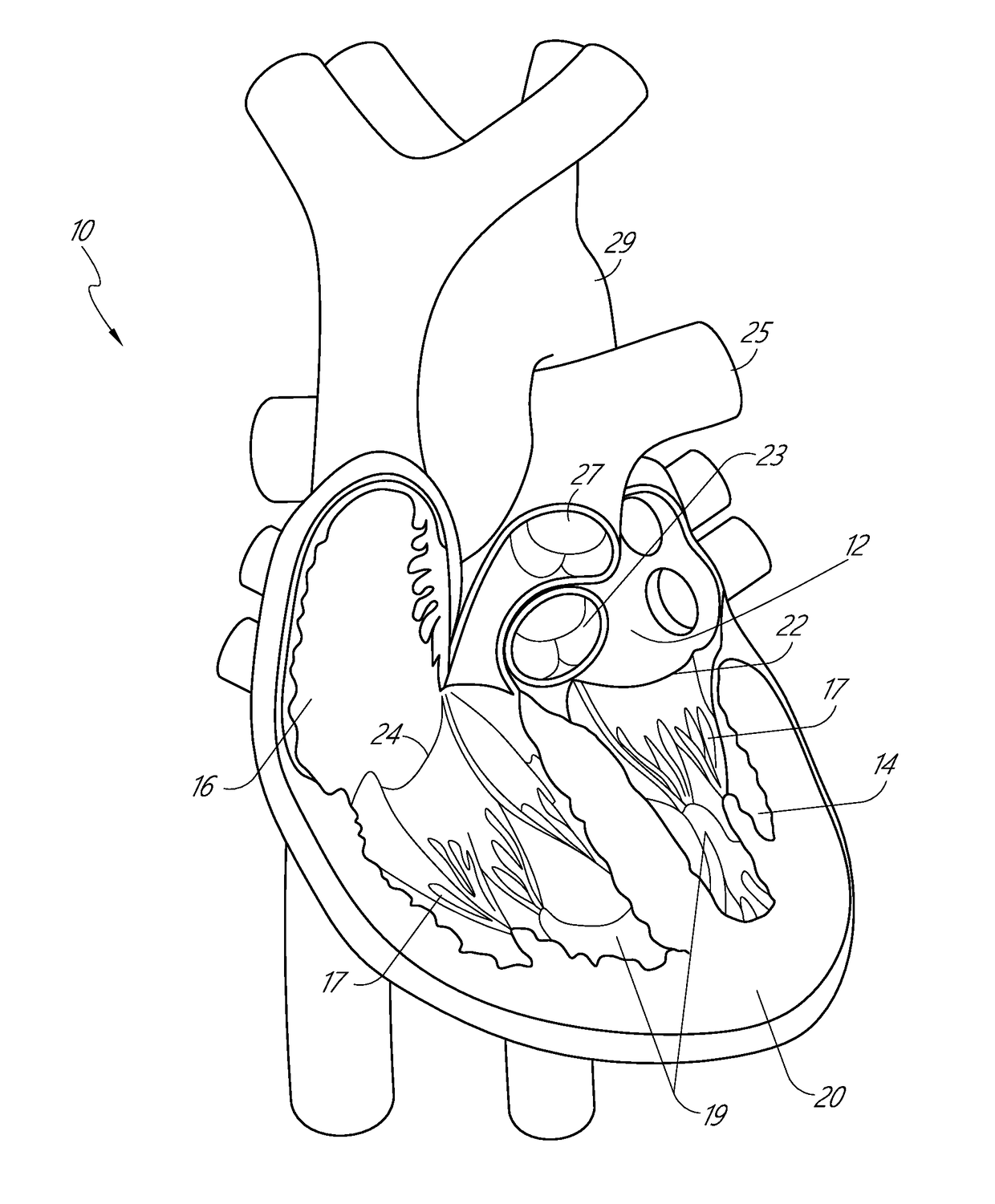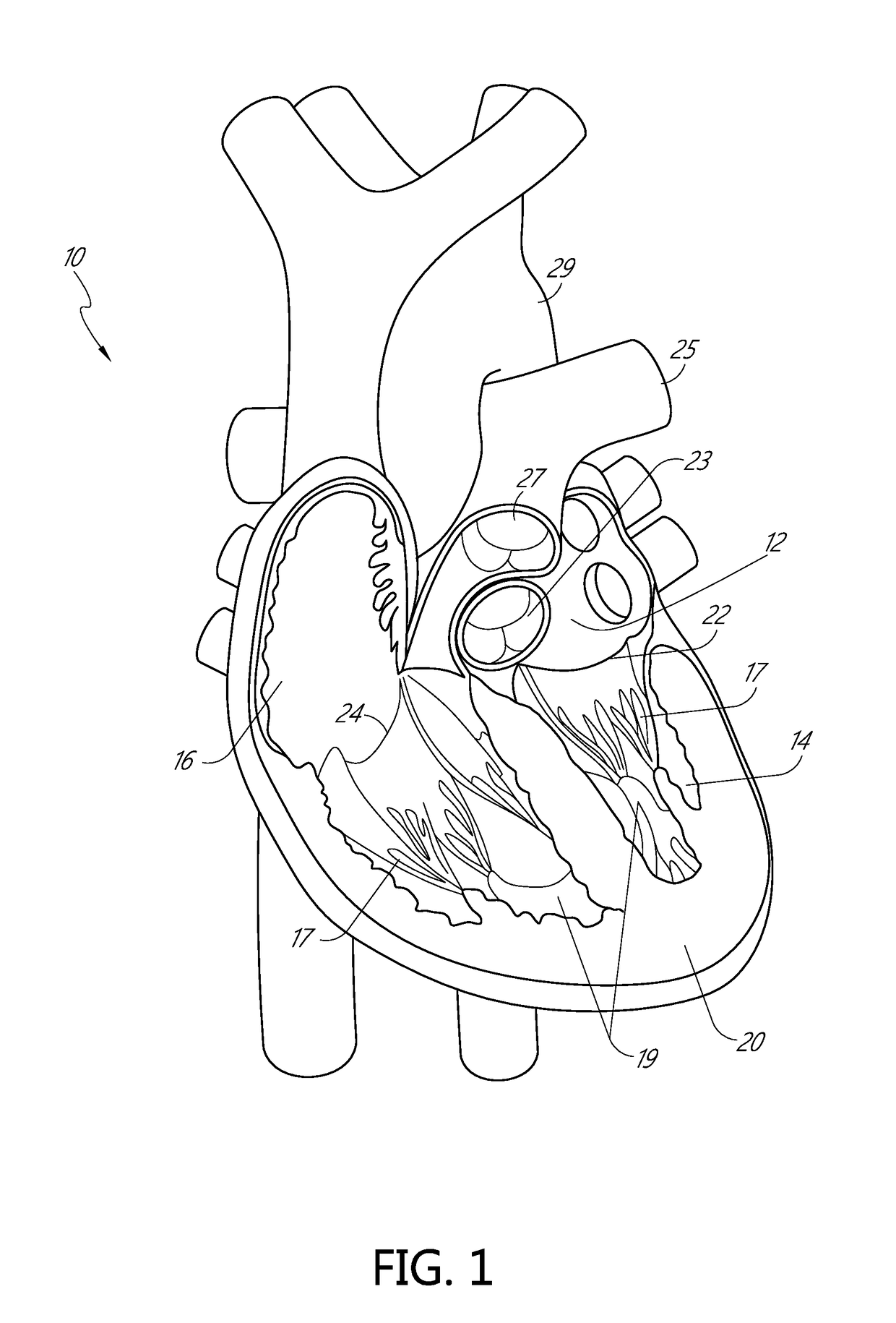Distal anchor apparatus and methods for mitral valve repair
a technology of mitral valve and anchorage, which is applied in the direction of heart valves, annuloplasty rings, etc., can solve the problems of affecting the proper functioning of one or more of the valves of the heart, affecting the function of the valve in the heart, and prolapse and regurgitation of the valves
- Summary
- Abstract
- Description
- Claims
- Application Information
AI Technical Summary
Benefits of technology
Problems solved by technology
Method used
Image
Examples
Embodiment Construction
[0122]The headings provided herein, if any, are for convenience only and do not necessarily affect the scope or meaning of the claimed invention.
Overview
[0123]Apparatus and methods for performing a non-invasive procedure to repair a cardiac valve, such as a mitral valve or tricuspid valve, are described herein. In some embodiments, a method for repairing a mitral valve includes inserting a delivery device through an apex region (or adjacent to the apex region) of a heart and extending a distal end of the delivery device to the proximal side of a leaflet of the mitral valve. A piercing portion of the delivery device can be used to form an opening in the leaflet, through which the distal end of the delivery device can be inserted. The delivery device can be used to form or deliver a distal anchor to the distal side of the leaflet. The delivery device can then be withdrawn and a tether coupled to the distal anchor can be secured to an outer surface of the heart at the apex region with,...
PUM
 Login to View More
Login to View More Abstract
Description
Claims
Application Information
 Login to View More
Login to View More - R&D
- Intellectual Property
- Life Sciences
- Materials
- Tech Scout
- Unparalleled Data Quality
- Higher Quality Content
- 60% Fewer Hallucinations
Browse by: Latest US Patents, China's latest patents, Technical Efficacy Thesaurus, Application Domain, Technology Topic, Popular Technical Reports.
© 2025 PatSnap. All rights reserved.Legal|Privacy policy|Modern Slavery Act Transparency Statement|Sitemap|About US| Contact US: help@patsnap.com



